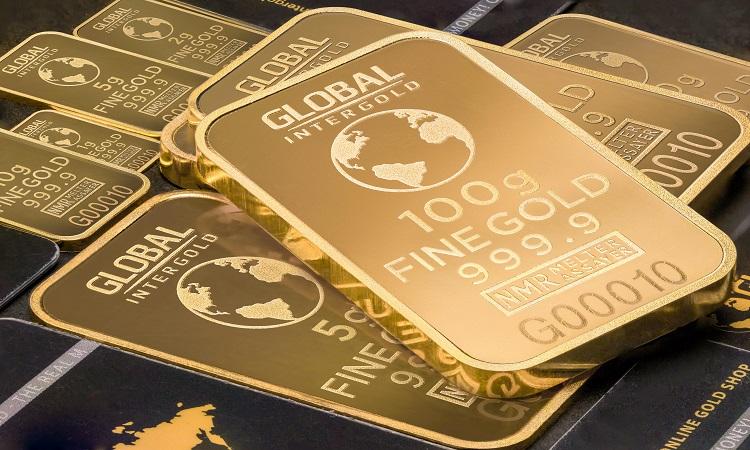Introduction to the Gold Market
Gold market has long been viewed as a safe haven for investors during times of economic instability. Its intrinsic value and historical significance as a form of currency make it an appealing investment choice. Understanding the latest trends and news in the gold market is essential for investors to navigate its fluctuations effectively.
Recent Trends in Gold Prices
As of late 2024, gold prices have experienced notable volatility. Following a period of significant price increases, recent weeks have shown fluctuations as economic data and geopolitical tensions continue to shift. Currently, gold prices hover around $2,000 per ounce, reflecting both investor caution and ongoing demand.

Key Drivers Behind Current Price Movements
1. Inflation Rates and Economic Indicators
Rising inflation remains one of the primary factors affecting gold prices. Recent reports indicate inflation rates have surged in various economies, leading investors to seek gold as a hedge. Economic indicators such as consumer price index (CPI) data have shown persistent inflationary pressures, prompting heightened interest in gold.
2. Federal Reserve Policies
The U.S. Federal Reserve’s monetary policy decisions play a significant role in gold price movements. Recently, the Fed signaled potential interest rate adjustments in response to inflation concerns. Lower interest rates tend to support gold prices as they reduce the opportunity cost of holding non-yielding assets like gold.
3. Geopolitical Tensions and Events
Geopolitical events, including conflicts in key regions and trade tensions, have also influenced gold prices. Ongoing uncertainties surrounding global trade agreements and military conflicts have driven investors toward gold as a stable asset, resulting in increased demand and upward pressure on prices.
Impact of Currency Fluctuations on Gold Prices
The value of the U.S. dollar is inversely related to gold prices. Recently, a weaker dollar has contributed to rising gold prices, making it more affordable for international buyers. As the dollar fluctuates due to economic conditions, its impact on gold demand remains significant.
Gold Demand Trends: Consumer and Institutional
Consumer demand for gold, particularly in countries like India and China, remains robust. Seasonal events and cultural significance drive jewelry demand, impacting overall market conditions. Additionally, institutional investors, including hedge funds and ETFs, have been increasing their gold allocations, further supporting prices.
Recent Central Bank Actions Regarding Gold Reserves
Central banks worldwide have been actively buying gold as part of their reserve strategies. Recent reports indicate that several nations are increasing their gold holdings to diversify against potential currency devaluation. This trend underscores gold’s ongoing role as a critical asset for national reserves and its impact on global demand.
Technological Innovations in Gold Mining
Advancements in mining technology are changing the gold landscape. New extraction methods and environmentally friendly practices are making gold mining more efficient and sustainable. These innovations can potentially increase supply while reducing production costs, influencing market dynamics.

Long-Term Price Predictions
Experts suggest that gold may continue to rise in value over the long term due to persistent inflation and ongoing geopolitical uncertainties. Some forecasts indicate gold could reach $2,500 per ounce or higher in the next few years, driven by increasing demand and constrained supply.
Comparison of Gold with Other Precious Metals
While gold remains the go-to precious metal for investors, other metals like silver, platinum, and palladium also have investment value. However, gold’s historical stability and wide acceptance often make it a more favorable option, especially during economic uncertainty.
Investment Strategies in the Current Gold Market
Investors looking to navigate the current gold market may consider diversifying their portfolios with gold ETFs, mining stocks, or physical gold. Strategies should focus on long-term growth while remaining aware of short-term fluctuations and market sentiment.
Gold Market Forecasts from Experts
Market analysts are closely monitoring economic indicators and geopolitical events to refine their gold price forecasts. Many predict a bullish trend for gold in the coming months, especially if inflation continues to rise and the economic environment remains uncertain.
Risks and Challenges for Gold Investors
Investing in gold is not without risks. Market volatility, changes in interest rates, and currency fluctuations can significantly impact prices. Investors must remain vigilant and informed about the factors influencing the gold market to mitigate potential losses.
Conclusion: Staying Informed in a Changing Market
Staying updated on the latest gold market news and analysis is crucial for making informed investment decisions. Understanding the factors that influence gold prices, including inflation, interest rates, and geopolitical events, allows investors to navigate the market effectively and capitalize on potential opportunities.
FAQs about the Gold Market
- What is currently driving gold prices higher?
Rising inflation, weak U.S. dollar, and geopolitical tensions are the primary drivers behind the recent increases in gold prices. - How do central banks influence the gold market?
Central banks affect gold prices by increasing their reserves, which creates higher demand and stabilizes prices. - Are gold prices expected to rise in the long term?
Many experts predict that gold prices will continue to rise due to persistent inflation and ongoing global uncertainties. - What’re the risk associated with investing in gold?
Risks include market volatility, interest rate changes, and currency fluctuations, which can all impact gold prices. - How can I invest in gold?
Investors can buy physical gold, invest in gold ETFs, or purchase stocks in gold mining companies, depending on their investment strategy and risk tolerance.
Also read: Mastering Advanced RSI (Relative Strength Index) Strategies. 30 Point About RSI You Must Know




